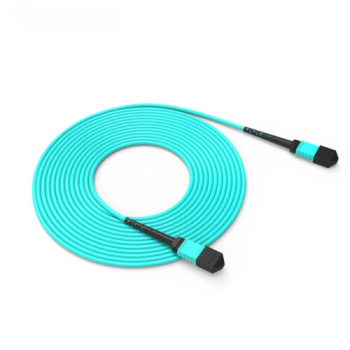In the world of fiber optic technology, choosing the right patch cord manufacturer is crucial for ensuring seamless data transmission and reliable connectivity. With a wide range of manufacturers available, each offering various categories and features, it can be overwhelming to navigate through the options. This article aims to provide a comprehensive exploration of the categories and features offered by fiber optic patch cord manufacturers, empowering you to make an informed decision that meets your specific needs. Welcome to visit the fiber patch cords | bonelinks to learn more!
Single-mode vs. Multimode Patch Cords:
One of the primary categories to consider when selecting a patch cord manufacturer is the distinction between single-mode and multimode patch cords. Single-mode patch cords are designed for long-distance transmissions, making them ideal for applications requiring high bandwidth over extended distances. On the other hand, multimode patch cords are better suited for shorter distances and offer cost-effective solutions for applications with lower bandwidth requirements.
Connector Types:
Another important aspect to consider is the variety of connector types offered by patch cord manufacturers. Common connector types include SC (Standard Connector), LC (Lucent Connector), ST (Straight Tip), and MTP/MPO (Multi-fiber Push-On/Pull-off). Each connector type has its advantages and is suitable for specific applications. It is crucial to understand your infrastructure and equipment requirements to choose the appropriate connector type for seamless compatibility.
Fiber Type:
Fiber optic patch cords come in different fiber types, mainly single-mode and multimode fibers. Single-mode fibers have a smaller core size and allow for the transmission of a single beam of light, resulting in lower dispersion and greater signal integrity over long distances. Multimode fibers, with larger core sizes, enable the transmission of multiple beams of light simultaneously. Understanding the requirements of your network infrastructure will help you determine the appropriate fiber type for your application.
Cable Construction and Length:
Manufacturers offer various cable constructions and lengths to cater to different installation needs. Cable constructions may include tight-buffered or loose-tube designs, each having its advantages in terms of flexibility, protection, and durability. Consider the environmental conditions and installation requirements of your network when selecting the appropriate cable construction. Additionally, choose patch cords with suitable lengths to ensure efficient cable management and avoid unnecessary clutter.
Quality and Testing:
When evaluating patch cord manufacturers, it is essential to consider the quality of their products and the testing procedures they follow. Look for manufacturers that adhere to stringent quality control measures, such as ISO certifications, to ensure the reliability and performance of their patch cords. Inquire about the testing processes, such as insertion loss and return loss testing, to guarantee the compliance of the patch cords with industry standards.
Customization Options:
Every network infrastructure has unique requirements, and some manufacturers offer customization options to meet specific needs. Whether it’s cable length, connector types, or color coding, customization can enhance the compatibility and organization of your network. Check if the manufacturer provides customization services and discuss your requirements to determine if they can accommodate your specific needs.
Conclusion:
Choosing the right fiber optic patch cord manufacturer is essential for establishing a robust and efficient network infrastructure. By exploring the categories and features offered by manufacturers, such as single-mode vs. multimode patch cords, connector types, fiber types, cable construction, and customization options, you can make an informed decision that aligns with your specific needs. Prioritize quality, compatibility, and reliability when selecting a manufacturer, and consider seeking expert advice if needed. With thorough research and evaluation, you can confidently choose a manufacturer that provides high-quality fiber optic patch cords to support your network’s requirements.















